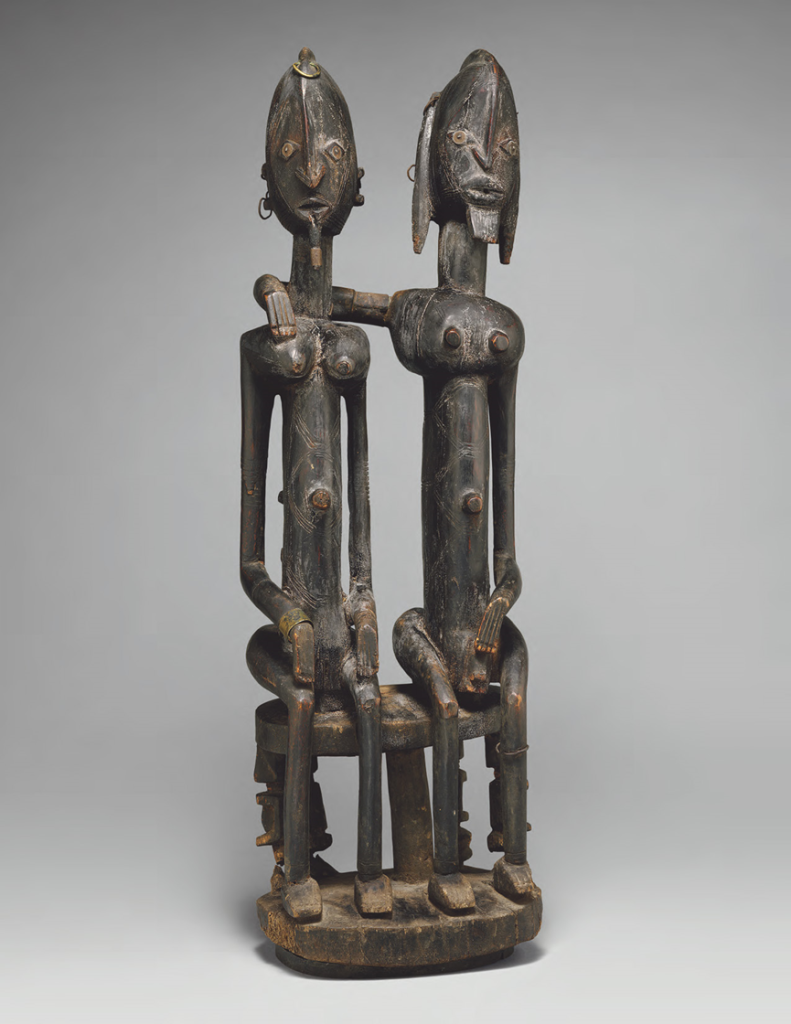
Name of Artifact: Seated Couple
Original Country: Mali
Year of Production: 18th-early 19th century
Location Now: The Metropolitan Museum of Art, New York, USA
Background Information:
This Dogon sculpture represents a seated couple, carved from a single block of wood. On a metaphysical level, Dogon thought has conceived of the soul as male and female twins. The master sculptor who created this pair evokes that human duality in a concise unit of being. The union of their parallel, elongated bodies, signaled by the horizontal gesture of the male’s proper right arm, is one of exacting bilateral symmetry. They are essential counterparts in procreation and sustenance, and a strategic variation of attributes distinguishes their roles. The equilibrium denoted by these complementary visual elements—his beard and her lip ornament; his nipples and her breasts; the quiver slung across his back and the infant carried on hers—suggests the rigor of a series of mathematical equations. A Dogon account traces the origins of this tradition to the first human death and a subsequent desire to support the soul. The imposing scale of this tribute suggests that it was likely placed on a family altar to venerate a notable elder. Of the prayers and offerings directed toward influential ancestors, the most important were petitions for the introduction of new life into the community. Over the course of the last millennium, amid the diffusion of Islam across the Sahel region south of the Sahara, local Muslim belief also came to incorporate such worldviews. In the mid-twentieth century, French ethnographers began to publish their understanding of the complex cosmology and mythology of the Dogon and to collect related artifacts to record what they perceived to be a disappearing culture. A more widespread admiration for the spare elegance of the Dogon sculptural aesthetic followed, occurring in parallel to an increasing prioritization of the Islamic faith in Dogon communities. This particular sculpture likely remained in use in Mali until the 1960s.
